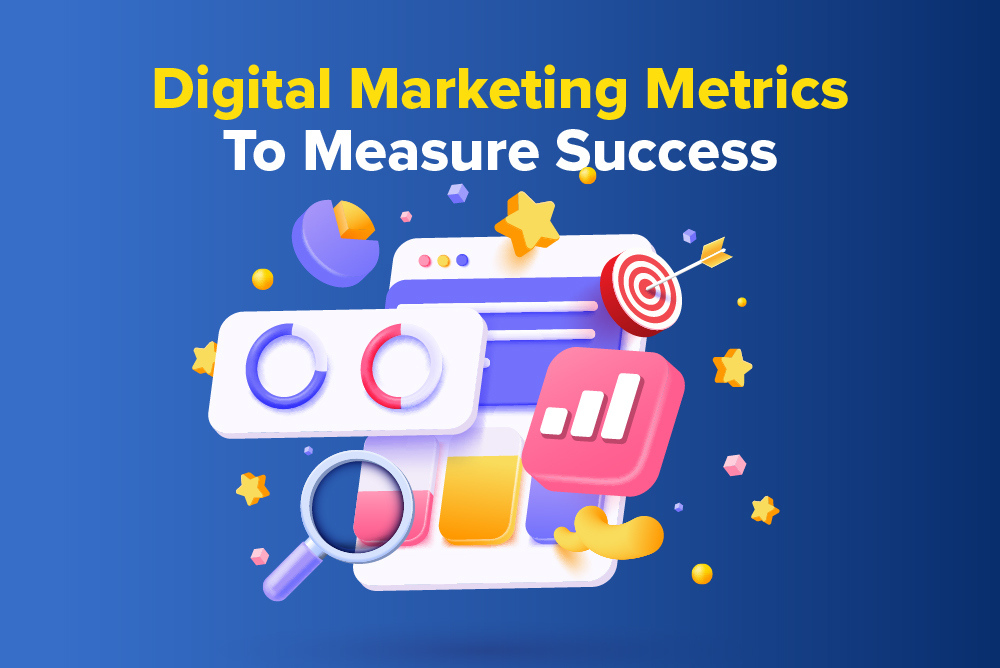5 Key Metrics Every Digital Marketer Should Track to Maximize Campaign Success
In the fast-paced world of digital marketing, measuring success is crucial to refining strategies, improving performance, and achieving business goals. Whether you’re managing a small business or working on large-scale digital campaigns, tracking the right metrics will help you understand how your marketing efforts are performing and where adjustments need to be made. Without the right insights, you could be flying blind and missing out on opportunities to optimize your campaigns.
In this blog post, we’ll walk you through 5 essential metrics every digital marketer should track and why they’re important to your overall strategy.

1. Website Traffic
The first and most fundamental metric to track is website traffic. It’s the lifeblood of any digital marketing strategy, providing insights into how many people are visiting your site, where they’re coming from, and what pages they’re engaging with. Tracking website traffic allows you to measure the effectiveness of your content, SEO, social media, and paid ad campaigns.
Why It Matters:
- Traffic gives you a basic sense of how well your marketing efforts are driving people to your site.
- You can identify the most popular pages or blog posts, allowing you to optimize content and create more of what works.
- Knowing where your traffic is coming from (organic search, social media, or paid ads) helps you allocate resources more efficiently.
How to Track It:
- Use tools like Google Analytics or other website tracking software to monitor daily, weekly, and monthly traffic.

2. Conversion Rate
Once you know how much traffic you’re getting, it’s time to evaluate how well that traffic is converting. The conversion rate shows how many visitors take a desired action on your website, whether it’s making a purchase, filling out a form, or downloading a resource. A high conversion rate indicates that your website is effectively convincing visitors to take action, while a low conversion rate suggests you may need to tweak your user experience or messaging.
Why It Matters:
- A high conversion rate signifies that your website is well-optimized for turning visitors into customers or leads.
- Understanding the factors affecting conversion rates helps you pinpoint areas for improvement (e.g., clearer calls to action, better landing page design, or more relevant content).
How to Track It:
- Set up goals in Google Analytics to track conversions, or use conversion tracking tools in your email or advertising platforms.

3. Customer Acquisition Cost (CAC)
Customer acquisition cost (CAC) is the total amount spent to acquire a new customer, including marketing expenses like paid ads, content creation, and sales efforts. By calculating your CAC, you can determine whether your digital marketing campaigns are cost-effective and how much you should spend to bring in new clients.
Why It Matters:
- Knowing your CAC allows you to determine if you’re spending efficiently or overspending in certain areas.
- It helps you balance your marketing budget and forecast profitability.
- If your CAC is high compared to customer lifetime value (CLV), it may be time to reassess your marketing strategies.
How to Track It:
- To calculate CAC, divide your total marketing and sales expenses by the number of new customers acquired during a specific time period.

4. Return on Investment (ROI)
ROI is one of the most critical metrics for any marketer. It measures the profitability of your marketing campaigns by comparing the revenue generated against the cost of the campaigns. A positive ROI means your marketing efforts are generating more revenue than what you’ve spent, while a negative ROI signals the need to rework your strategy.
Why It Matters:
- ROI directly impacts your bottom line and helps you understand the effectiveness of your marketing spend.
- Tracking ROI helps you allocate your marketing budget more wisely, focusing on the most profitable channels.
- It provides a clear picture of your marketing campaign’s financial success.
How to Track It:
- Use simple ROI formulas: (Revenue – Cost) ÷ Cost = ROI. Digital platforms like Google Ads and Facebook Ads also provide built-in ROI calculations.

5. Social Media Engagement
Social media is one of the most influential digital marketing channels, and engagement metrics give you insight into how your audience is interacting with your content. Engagement refers to actions like likes, shares, comments, and overall interaction with your posts. High engagement means your content resonates with your audience, which can lead to brand awareness, loyalty, and even conversions.
Why It Matters:
- Social media engagement indicates how effectively you’re connecting with your target audience.
- It boosts brand visibility and helps you understand what types of content your followers enjoy.
- Consistent engagement can lead to higher organic reach, making your posts more visible to a broader audience.
How to Track It:
- Use native platform analytics (e.g., Facebook Insights, Twitter Analytics, LinkedIn Analytics) to monitor engagement.
- You can also track overall sentiment to gauge how your audience feels about your brand.

Recent Posts
Check Our Digital Marketing Services
- Amazon Advertising & Amazon Listing
- Contact Us
- Content Marketing
- Email Marketing
- Facebook Advertising
- Flipkart Advertising & Flipkart Listing
- Get Quote
- Google Advertising
- Google My Business (GMB) Management
- Portfolio
- PPC(Pay-per-click) Advertising
- Privacy Policy
- SEO services in varanasi
- Services
- SMM
- SMO
- Testimonials
- Website Development
- WhatsApp Marketing